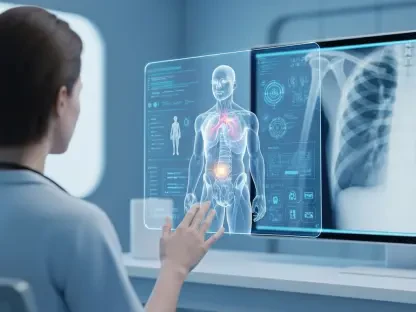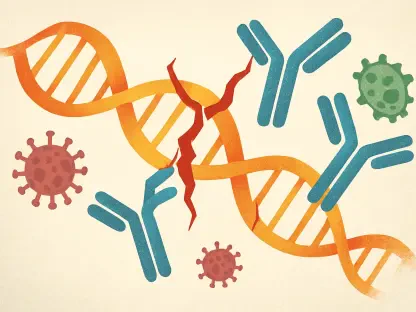I’m thrilled to sit down with Ivan Kairatov, a renowned expert in biopharma with a deep passion for integrating technology and innovation into mental health research. With years of experience in research and development, Ivan has been at the forefront of exploring how artificial intelligence can revolutionize the way we approach complex issues like alcohol use disorder (AUD), particularly in high-stress professions such as firefighting. Today, we’ll dive into his groundbreaking work on using deep learning models to detect early signs of AUD among firefighters, uncovering the challenges of stress and trauma, the cultural barriers within the profession, and the transformative potential of AI-driven screening methods.
Can you tell us what sparked your interest in studying alcohol use disorder among firefighters specifically?
I’ve always been drawn to understanding how occupational stress impacts mental health, and firefighters stood out as a group facing extreme, repeated trauma in their daily work. Their role involves constant exposure to life-threatening situations and emotional strain, which places them at a significantly higher risk for disorders like AUD compared to the general population. I wanted to focus on a profession where the stakes are incredibly high—not just for the individuals, but for the safety of entire communities. This inspired me to explore ways technology could offer early intervention and support.
What is it about the firefighting profession that makes them particularly vulnerable to developing AUD?
Firefighters endure a unique combination of physical and psychological stressors. They’re often first on the scene of disasters, witnessing loss and trauma repeatedly, which can lead to cumulative stress or even PTSD. Unlike many other high-stress jobs, their work doesn’t allow for predictable downtime—emergencies can strike at any moment. This chronic stress, paired with the culture of needing to appear unflappable, often pushes them toward maladaptive coping mechanisms like alcohol to numb the emotional toll.
How does the culture within firefighting influence their relationship with alcohol and vulnerability?
There’s a strong cultural norm in firefighting that normalizes drinking, especially after tough shifts as a way to unwind or bond with colleagues. At the same time, showing vulnerability or admitting to struggles is often frowned upon. This creates a paradox where drinking is socially acceptable, but acknowledging a dependency or seeking help for AUD is seen as a sign of weakness. It’s a barrier that keeps many from getting the support they need, as they fear judgment or even jeopardizing their careers.
Can you describe the current approaches to screening for AUD in firefighters and the challenges they face?
Right now, screening for AUD largely relies on self-reporting through questionnaires. While these can be useful, they’re heavily influenced by a firefighter’s willingness to be honest. Many hesitate to disclose their struggles due to stigma or fear of professional repercussions, like being taken off duty. This leads to underreporting and missed opportunities for early intervention. There’s a clear need for more objective methods that don’t depend on self-disclosure and can reduce the risk of bias or shame.
Your research introduces a multimodal deep learning model for AUD screening. Can you explain what that means in simple terms?
Absolutely. A multimodal deep learning model is essentially a sophisticated AI system that looks at different types of data together to make predictions. In our study, we combined brain scans—specifically structural MRI images—with results from cognitive tests like motor coordination and executive function assessments. By integrating these diverse data points, the model learns patterns and interactions that might indicate a risk for AUD. It’s like putting together pieces of a puzzle to get a clearer picture of someone’s mental health risk without relying solely on their own account.
What was the significance of achieving around 80% accuracy with this model in detecting AUD risk?
Reaching 80% accuracy is a substantial step forward in mental health screening, especially for a complex issue like AUD. When we compared this to using just brain scans or clinical tests alone, which hovered around 62% accuracy, the improvement was striking. It means we’re much better at identifying firefighters who might be at risk, allowing for earlier support. For them, this could translate to timely interventions that prevent the disorder from worsening, ultimately protecting both their well-being and their ability to serve safely.
Why did you choose specific cognitive tests like the Grooved Pegboard Test and the Trail Making Test for this model?
These tests were selected because they provide critical insights into brain functions that can be affected by early stages of AUD. The Grooved Pegboard Test measures visual-motor coordination, which can reveal subtle neurological damage, especially in the non-dominant hand. The Trail Making Test assesses executive function—things like attention and problem-solving—which are often impaired by chronic alcohol use. Together, they give us a window into how alcohol might already be impacting a firefighter’s cognitive health, even before symptoms are obvious.
What do you foresee for the future of AI-driven mental health screening in high-stress professions like firefighting?
I’m optimistic that AI will become a cornerstone in mental health care for high-stress professions. As we refine these models, I envision shorter, more accessible screening protocols integrated into routine medical checkups, making them practical for widespread use. Beyond firefighting, this technology could extend to other trauma-exposed roles like paramedics or law enforcement. My forecast is that within the next decade, AI will help us not only detect risks with greater precision but also personalize interventions, reducing stigma and saving lives by addressing issues like AUD before they spiral out of control.









